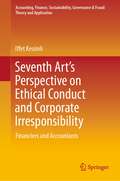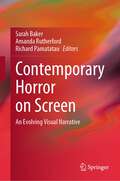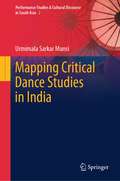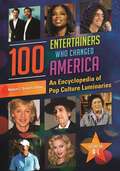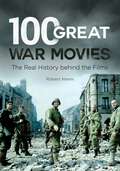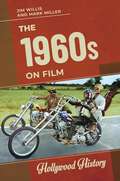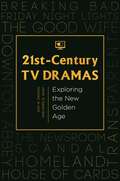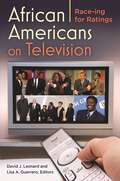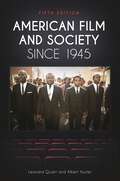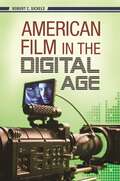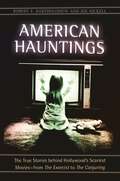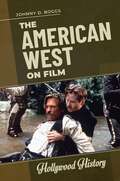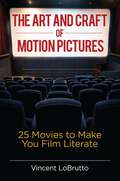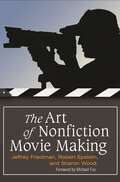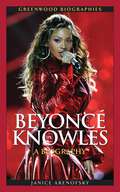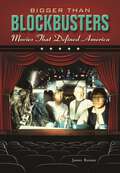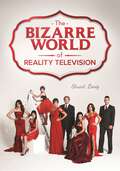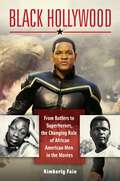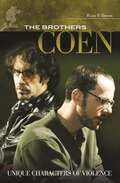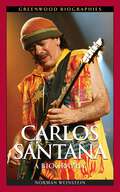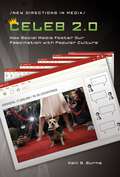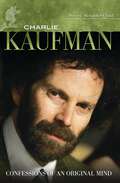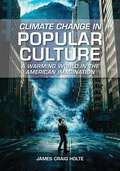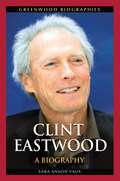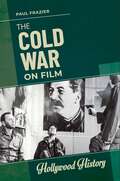- Table View
- List View
Seventh Art’s Perspective on Ethical Conduct and Corporate Irresponsibility: Financiers and Accountants (Accounting, Finance, Sustainability, Governance & Fraud: Theory and Application)
by Iffet KesimliThis book discusses the possibility of corporate professionals—specifically accountants, bankers, and financiers—being influenced by the seventh art, i.e. cinema, and acting out fraudulent actions depicted in the cinematic world in the real life situations. It is widely known that real world scenarios influence cinema. Through a field study, this book evaluates if there is a reciprocal effect on events in the real world being impacted by scenarios depicted in movies. A questionnaire was designed in order to understand the perception of business ethics among above-mentioned professionals and if such a perception was formed or influenced due to observed behaviors from movies. The book concludes with an assessment of the power of visual art in affecting real world behaviors and outlines strategies for recognizing and preventing such behaviors leading to unethical conduct and corporate irresponsibility.
Contemporary Horror on Screen: An Evolving Visual Narrative
by Sarah Baker Amanda Rutherford Richard PamatatauThis book highlights how horror in film and television creates platforms to address distinct areas of modern-day concern. In examining the prevalence of dark tropes in contemporary horror films such as Get Out, Annabelle: Creation, A Quiet Place, Hereditary and The Nun, as well as series such as Stranger Things, American Horror Story and Game of Thrones, amongst numerous others, the authors contend that we are witnessing the emergence of a ‘horror renaissance’. They posit that horror films or programmes, once widely considered to be a low form of popular culture entertainment, can contain deeper meanings or subtext and are increasingly covering serious subject matter. This book thus explores how horror is utilised as a tool to explore social and political anxieties of the cultural moment and is thus presented as a site for contestation, exploration and expansion to discuss present-day fears. It demonstrates how contemporary horror reflects the horror of modern-day life, be it political, biological, social or environmental. A vital contribution to studies of the horror genre in contemporary culture, and the effect it has on social anxieties in a threatening and seemingly apocalyptic time for the world, this is a vital text for students and researchers in popular culture, film, television and media studies.
Mapping Critical Dance Studies in India (Performance Studies & Cultural Discourse in South Asia #2)
by Urmimala Sarkar MunsiThis book provides a critical understanding of dance studies in India, bringing together various embodied practices identified loosely as dance. It suggests an alternative reading of the history of patronage, policies, and institutionalized understanding of categories such as classical, folk, modern, popular, and Bollywood that hierarchizes some dances as 'more' dance than others. It is of great interest to scholars looking at performing arts such as dance as a tool for identity assertions. It offers diverse possibilities of understanding dance through its inherent sociopolitical possibilities as a participatory or presentational tool for communication. The multidisciplinary approach brings together perspectives from critical dance studies, anthropology, history, and gender studies to connect embodied archives of different communities to create an intersectional methodology of studying dance in India as a powerful but marginal expressive art practice. Accessible at multiple levels, thecontent is relevant for undergraduate and postgraduate students, as well as researchers across dance, dance education, theatre, and performance studies.
100 Entertainers Who Changed America [2 volumes]: An Encyclopedia of Pop Culture Luminaries [2 volumes]
by Robert C. SickelsThis fascinating and thought-provoking read challenges readers to consider entertainers and entertainment in new ways, and highlights figures from outside the worlds of film, television, and music as influential "pop stars."Comprising approximately 100 entries from more than 50 contributors from a variety of fields, this book covers a wide historical swath of entertainment figures chosen primarily for their lasting influence on American popular culture, not their popularity. The result is a unique collection that spotlights a vastly different array of figures than would normally be included in a collection of this nature—and appeals to readers ranging from high school students to professionals researching specific entertainers.Each subject individual's influence on popular culture is analyzed from the context of his or her time to the present in a lively and engaging way and through a variety of intellectual approaches. Many entries examine commonly discussed figures' influence on popular culture in ways not normally seen—for example, the widespread appeal of Woody Allen's essay collections to other comedians; or the effect of cinematic adaptations of Tennessee Williams' plays in breaking down Hollywood censorship.
100 Great War Movies: The Real History behind the Films
by Robert J. NiemiThis book serves as a fascinating guide to 100 war films from 1930 to the present. Readers interested in war movies will learn surprising anecdotes about these films and will have all their questions about the films' historical accuracy answered.This cinematic guide to war movies spans 800 years in its analysis of films from those set in the 13th century Scottish Wars of Independence (Braveheart) to those taking place during the 21st-century war in Afghanistan (Lone Survivor). World War II has produced the largest number of war movies and continues to spawn recently released films such as Dunkirk. This book explores those, but also examines films set during such conflicts as the Napoleonic Wars, the American Civil War, World War I, the Vietnam War, and the wars in Afghanistan and Iraq.The book is organized alphabetically by film title, making it easy to navigate. Each entry is divided into five sections: Background (a brief discussion of the film's genesis and financing); Production (information about how, where, and when the film was shot); Synopsis (a detailed plot summary); Reception (how the film did in terms of box office, awards, and reviews) and "Reel History vs. Real History" (a brief analysis of the film's historical accuracy). This book is ideal for readers looking to get a vivid behind-the-scenes look at the greatest war movies ever made.
The 1960s on Film (Hollywood History)
by Jim Willis Mark MillerThe 1960s on Film tells the narrative of the 1960s through the lens of the movie camera, analyzing 10 films that focus on the people, events, and issues of the decade.Films create both an impression of and — at times for younger audiences — a primary definition of events, people, and issues of an era. The 1960s on Film examines the 1960s as the decade was presented in ten films that focused on that decade. Discussion will focus on both what the films have to say about the era and how close they come to accurately depicting it.For example, films such as Mississippi Burning and Selma tell the story of racial conflict and hope for reconciliation in the 1960s. Other films such as The Right Stuff and Hidden Figures show the deep fascination America had at that time with the burgeoning space program and NASA, while Easy Rider analyzes the role of rock music and drugs among young people of the decade. The Deer Hunter studies the controversies surrounding the war in Vietnam. The Graduate, Mad Men, JFK, and Thirteen Days also receive significant treatment in this exciting volume.
21st-Century TV Dramas: Exploring the New Golden Age
by Amy M. Damico Sara E. QuayIn its exploration of some of the most influential, popular, or critically acclaimed television dramas since the year 2000, this book documents how modern television dramas reflect our society through their complex narratives about prevailing economic, political, security, and social issues.Television dramas have changed since the turn of the 21st century—for the good, many would say, as a result of changes in technology, the rise of cable networks, and increased creative freedom. This book approaches the new golden age of television dramas by examining the programs that define the first 15 years of the new century through their complex narratives, high production value, star power, popularity, and enthusiastic fan culture.After an introduction that sets the stage for the book's content, thematic sections present concise chapters that explore key connections between television dramas and elements of 21st-century culture. The authors explore Downton Abbey as a distraction from contemporary class struggles, patriarchy and the past in Game of Thrones and Mad Men, and portrayals of the "dark hero protagonist" in The Sopranos, Dexter, and Breaking Bad, as a few examples of the book's coverage. With its multidisciplinary perspectives on a variety of themes—terrorism, race/class/gender, family dynamics, and sociopolitical and socioeconomic topics— this book will be relevant across the social sciences and cultural and media studies courses.
African Americans on Television: Race-ing for Ratings
by David J. LeonardA comprehensive look at the history of African Americans on television that discusses major trends in black TV and examines the broader social implications of the relationship between race and popular culture as well as race and representation.Previous treatments of the history of African Americans in television have largely lacked theoretical analysis of the relationship between representations and social contexts. African Americans on Television: Race-ing for Ratings fills the existing void by supplying fundamental history with critical analyses of the racial politics of television, documenting the considerable effect that television has had on popular notions of black identity in America since the inception of television.Covering a spectrum of genres—comedy, drama, talk shows, television movies, variety shows, and reality television, including shows such as Good Times, The Oprah Winfrey Show, and Chappelle's Show—this insightful work traces a cultural genealogy of African Americans in television. Its chronological analysis provides an engaging historical account of how African Americans entered the genre of television and have continued to play a central role in the development of both the medium and the industry. The book also tracks the shift in the significance of African Americans in the television market and industry, and the changing, but enduring, face of stereotypes and racism in American television culture.
American Film and Society since 1945
by Leonard Quart Albert AusterFrom Steven Spielberg's Lincoln to Clint Eastwood's American Sniper, this fifth edition of this classic film study text adds even more recent films and examines how these movies depict and represent the feelings and values of American society.One of the few authoritative books about American film and society, American Film and Society since 1945 combines accessible, fun-to-read text with a detailed, insightful, and scholarly political and social analysis that thoroughly explores the relationship of American film to society and provides essential historical context. The historical overview provides a "capsule analysis" of both American and Hollywood history for the most recent decade as well as past eras, in which topics like American realism; Vietnam, counterculture revolutions, and 1960s films; and Hollywood depictions of big business like Wall Street are covered. Readers will better understand the explicit and hidden meanings of films and appreciate the effects of the passion and personal engagement that viewers experience with films. This new edition prominently features a new chapter on American and Hollywood history from 2010 to 2017, giving readers an expanded examination of a breadth of culturally and socially important modern films that serves student research or pleasure reading. The coauthors have also included additional analysis of classic films such as To Kill a Mockingbird (1962) and A Face in the Crowd (1957).
American Film in the Digital Age (New Directions in Media)
by Robert C. SickelsThis eclectic, yet comprehensive analytical overview of the cataclysmic changes in the American film industry since 1990 shows how they have collectively resulted in a new era—The Digital Age.The American film industry has entered a new era. American Film in the Digital Age traces the industrial changes since 1990 that have brought us to this point, namely: the rise of media conglomerates, the proliferation of pornography through peripheral avenues of mainstream media, the role of star actors and directors in distributing and publicizing their own pet projects, the development of digital technology, and the death of truly independent films. Author Robert Sickels draws straight lines from the movies to music, DVDs, video games, fast food, digital-on-demand, and more, to demonstrate how all forms of media are merging into one. He explores the irony that the success of independent films essentially killed independent cinema, showing how it has become almost impossible to get a film released without the imprimatur of one of the big six media companies—Fox, Viacom, TimeWarner, Disney, General Electric, or CBS. In the end, using recent, popular films as examples, he explains not only how we got where we are, but where we're likely headed as well.
American Hauntings: The True Stories behind Hollywood's Scariest Movies—from The Exorcist to The Conjuring
by Robert E. Bartholomew Joe NickellThis work provides an accurate, in-depth examination and scientific evaluation of the most famous hauntings in American history as depicted in popular films and television programs.Neither a debunking book nor one written for the "true believer" in the paranormal, American Hauntings objectively scrutinizes the historic evidence behind such hugely popular films as The Exorcist, The Amityville Horror, An American Haunting, The Conjuring, and The Haunting in Connecticut to ascertain the accuracy of these entertainment depictions of "true life" hauntings. The authors then compare these popular culture accounts against the alleged real-life encounters and impartially weigh the evidence to assess whether each incident actually took place.Written by highly credentialed, recognized authorities on the paranormal and social psychology, this book contains meticulously documented, science-based information written for a broad audience, from middle and high school students and those taking introductory courses at a university level to general readers. There is no other work that provides as careful and unbiased an evaluation of the most famous hauntings in American history. The book also examines the reliability of popular television shows such as Unsolved Mysteries and Paranormal Witness.
The American West on Film (Hollywood History)
by Johnny D. BoggsMore than a history of Western movies, The American West on Film intertwines film history, the history of the American West, and American social history into one unique volume.The American West on Film chronicles 12 Hollywood motion pictures that are set in the post–Civil War American West, including The Ox-Bow Incident, Red River, High Noon, The Searchers, The Magnificent Seven, Little Big Man, and Tombstone. Each film overview summarizes the movie's plot, details how the film came to be made, the critical and box-office reactions upon its release, and the history of the time period or actual event. This is followed by a comparison and contrast of the filmmakers' version of history with the facts, as well as an analysis of the film's significance, then and now.Relying on contemporary accounts and historical analysis as well as perspectives from filmmakers, historians, and critics, the author describes what it took to get each movie made and how close to the historical truth the movie actually got. Readers will come away with a better understanding of how movies often reflect the time in which they were made, and how Westerns can offer provocative social commentary hidden beneath old-fashioned "shoot-em-ups."
The Art and Craft of Motion Pictures: 25 Movies to Make You Film Literate
by Vincent LoBruttoThis volume can rightfully be called "a film school in a single book." Investigating and analyzing the elements and concepts of motion picture creation, this book looks closely at 25 films that represent a wide range of styles and subjects.Although most motion picture viewers have seen numerous movies in their lifetime, few in the general public have a firm and deep understanding of how motion pictures are created, or a grasp of the intricacies of cinematic storytelling and content. By presenting 25 films, American and international, Hollywood and independent, this book educates and enlightens readers about the details of the motion picture creation process.Some readers will have viewed certain films in the volume, but many will be introduced to major cinematic works within the canon of great and essential films for the very first time. Topics explored include animation, period films, editing, directorial style, and non-linear cinematic structure. Readers will learn about the origin of the jump cut in Breathless, time and space in Hiroshima Mon Amour, and the editing in Orson Welles's essay film F is for Fake. The Art and Craft of Motion Pictures: 25 Movies to Make You Film Literate will educate the novice and avid moviegoer alike about the inner workings of this dynamic, popular, and culturally significant art form.
The Art of Nonfiction Movie Making
by Jeffrey Friedman Rob Epstein Sharon WoodThe past few years have featured such blockbusters as Super-Size Me, Fahrenheit 9/11, Sicko, March of the Penguins, and An Inconvenient Truth. And as news articles proclaim a new era in the history of documentary films, more and more new directors are making their first film a nonfiction one. But in addition to posing all of the usual challenges inherent to more standard filmmaking, documentaries also present unique problems that need to be understood from the outset. Where does the idea come from? How do you raise the money? How much money do you need? What visual style is best suited to the story? What are the legal issues involved? And how can a film reach that all-important milestone and find a willing distributor? Epstein, Friedman, and Wood tackle all of these important questions with examples and anecdotes from their own careers. The result is an informative and entertaining guide for those just starting out, and an enlightening read for anyone interested in a behind-the-scenes look at this newly reinvigorated field of film.
Beyoncé Knowles: A Biography (Greenwood Biographies)
by Janice ArenofskyAlthough Beyoncé Knowles is not yet 30, the sensual superstar has already succeeded on many levels: as a dancer, singer, composer, model, music producer, video director and actress. Like rap star/entrepreneur Jay-Z, with whom Beyoncé recently married, she has evolved into a businesswoman, who with her designer-mother, Tina Knowles, markets Beyoncé's personal fashion line, House of Dereon. The multi-talented, global entertainer lends her name and image to many commercial and philanthropic ventures. She is the spokeswoman for L'Oreal and appears in ads for Pepsi and Ford.This biography tells the story of a young, talented woman's meteoric rise in the entertainment industry. From a shy, demure Catholic schoolgirl growing up in Houston, Texas, Beyoncé Knowles eventually morphed into the first African-American woman to win the Songwriter of the Year Award from the American Society of Composers, Authors and Publishers Pop Music Awards. The once-shy suburban schoolgirl has gone far beyond her original dream of becoming a first-rate musician and vocalist. With the assistance of her manager-father—former Xerox executive Mathew Knowles—and as lead singer of the R&B girl group Destiny's Child (the world's all-time bestselling female group), Beyoncé has won 10 Grammy Awards and two Golden Globe nominations. Her albums have reached more than 20 million people worldwide, and she has become a cultural icon to music lovers everywhere as well as a role model for young women. Author Janice Arenofsky gives students and general readers alike an insightful look at a music and fashion icon who has a unique niche in popular culture today. Complete with photos, a timeline, and a thorough bibliography.
Bigger Than Blockbusters: Movies That Defined America
by James RomanWhether it's the hum drum existence of Marion Crane and her illicit love affair, the psychotic antics of Norman Bates, the sudden irrational migration of birds, a crop duster swooping down on Roger Thornhill in the middle of nowhere, or Vincent Vega and Mia Wallace's unforgettable dance at Jack Rabbit Slim's - they are all cinematic moments that forever changed the psyche and viewing experience of American audiences. Bigger Than Blockbusters: Movies That Defined America tells the stories behind the most significant and influential films in American culture, movies that have had a profound influence on the literary, cinematic and popular culture of our time.Arranged chronologically, the volume gives readers an opportunity to place the films within the context of the social and cultural historic dynamic of the time, making this an ideal source for student papers and reports. Each entry includes the filmmaker, actors, release information, a synopsis of the film, critics' reviews, awards, current availability, and then background on the making of the film in an artistic, economic, and technological context. Spanning all genres, including horror and drama, adventure, comedy, musicals, science fiction, and more, this volume is loaded with enough trivia and factoids to satisfy even the most die-hard movie buff. Also included are other Greatest Films compilations from the National Society of Film Critics and noteworthy sources for comparative purposes. Guaranteed to inspire forays into film favorites as well as some very lively debate, this resource is essential reading for film lovers and students alike.
The Bizarre World of Reality Television
by Stuart LenigHow do reality television programs shape our view of the world and what we perceive as real and normal? This book explores the bizarre and highly controversial world of reality television, including its early history, wide variety of subject matter, and social implications.In recent decades, reality television shows ranging from Keeping up with the Kardashians to Duck Dynasty have become increasingly popular. Why are these "unscripted" programs irresistible to millions of viewers? And what does the nearly universal success of reality shows say about American culture? This book covers more than 100 major and influential reality programs past and present, discussing the origins and past of reality programming, the contemporary social and economic conditions that led to the rise of reality shows, and the ways in which the most successful shows achieve popularity with both male and female demographics or appeal to specific, targeted niche audiences.The text addresses reality TV within five, easy-to-identify content categories: competition shows, relationship/love-interest shows, real people or alternative lifestyle and culture shows, transformation shows, and international programming. By examining modern reality television, a topic of great interest for a wide variety of readers, this book also discusses cultural and social norms in the United States, including materialism, unrealistic beauty ideals, gender roles and stereotypes in society, dynamics of personal relationships, teenage lifestyles and issues, and the branding of people for financial gain and wider viewership.
Black Hollywood: From Butlers to Superheroes, the Changing Role of African American Men in the Movies
by Kimberly FainThis thought-provoking work examines the dehumanizing depictions of black males in the movies since 1910, analyzing images that were once imposed on black men and are now appropriated and manipulated by them.Moving through cinematic history decade by decade since 1910, this important volume explores the appropriation, exploitation, and agency of black performers in Hollywood by looking at the black actors, directors, and producers who have shaped the image of African American males in film. To determine how these archetypes differentiate African American males in the public's subconscious, the book asks probing questions—for example, whether these images are a reflection of society's fears or realistic depictions of a pluralistic America.Even as the work acknowledges the controversial history of black representation in film, it also celebrates the success stories of blacks in the industry. It shows how blacks in Hollywood manipulate degrading stereotypes, gain control, advance their careers, and earn money while making social statements or bringing about changes in culture. It discusses how social activist performers—such as Paul Robeson, Sidney Poitier, Harry Belafonte, and Spike Lee—reflect political and social movements in their movies, and it reviews the interactions between black actors and their white counterparts to analyze how black males express their heritage, individual identity, and social issues through film.
The Brothers Coen: Unique Characters of Violence (Modern Filmmakers)
by Ryan P. DoomThis examination of the distinctive cinema of Joel and Ethan Coen explores the theme of violence in their wide-ranging body of work.The Brothers Coen: Unique Characters of Violence spans the career of the two-time Oscar-winning producer/director team, exploring the theme of violence that runs through a genre-spanning body of work, from the neo-noir of Blood Simple to the brutal comedy Burn After Reading (2008).In chapters focusing on major characters, Ryan Doom looks at the chaotic cinematic universe of the Coens, where violent acts inevitably have devastating, unintended consequences. The remarkable gallery of Coen characters are all here: hardboiled gangster Tom Regan from Miller's Crossing (1990), overmatched amateur kidnapper Jerry Lundergaard from Fargo (1996), accidental private eye "The Dude" from The Big Lebowski (1998), psychopathic assassin-for-hire Anton Chigurh from the 2007 Academy Award winner No Country for Old Men, and more.
Carlos Santana: A Biography (Greenwood Biographies)
by Norman WeinsteinAs eclectic and paradoxical as its subject, this is the first and only book about Carlos Santana that reveals the full sweep of his musical odyssey.Carlos Santana: A Biography explores the life and music of this extraordinary guitarist, ranging from his professional beginnings—his first regular gig was at a Tijuana strip club—and early success in San Francisco to the definitive songs and albums of the 1970s, the commercial resurgence with 1999's Supernatural, his induction into the Rock and Roll Hall of Fame, and his current work with producer Bill Laswell.Unlike other biographies, this book offers a comprehensive look at Santana's transitions through a variety of musical styles beyond rock, including blues, salsa, jazz, and world music. It also portrays Santana as very much a child of the eclectic musical culture of the 1960s, as well as showing the profound influence of the New Age movement on Santana's life and music.
Celeb 2.0: How Social Media Foster Our Fascination with Popular Culture (New Directions in Media)
by Kelli S. BurnsThis volume looks at how the new capabilities of Web 2.0 are changing the worlds of celebrity fandom and gossip.With Ashton Kutcher's record-breaking "tweeting" more famous than his films, and Perez Hilton actually getting more attention than Paris, the actress often covered in his blog, the worlds of celebrity celebration and online social networking are pushing the public's crush on the famous and infamous into overdrive. Celeb 2.0: How Social Media Foster Our Fascination with Popular Culture explores this phenomenon.Celeb 2.0 looks at how blogs, video sharing sites, user-news sites, social networks, and message boards are fueling America's already voracious consumption of pop culture. Full of fascinating insights and interviews, the book looks at how celebrities use blogs, Twitter, and other tools, how YouTube and other sites create celebrity, how Web 2.0 shortens the distance between fans and stars, and how the new social media influences news reporting and series television.
Charlie Kaufman: Confessions of an Original Mind (Modern Filmmakers)
by Doreen Alexander ChildThis revealing study looks at the influences and creative impulses that shape one of today's most progressive, thoughtful filmmakers.Charlie Kaufman got his start in television, but it was his first film, the eccentric Being John Malkovich, that won notice for his unique storytelling style. With the aid of a plethora of contributions from those with whom the writer has worked, Charlie Kaufman: Confessions of an Original Mind presents the intriguing story of that movie and others as it examines one of the most innovative voices in modern film.This exhaustive study of Kaufman's life and work is organized chronologically to cover his early influences as well as his most-recent ventures. Highlights include explorations of Kaufman's collaboration with Being John Malkovich director Spike Jonze—who stood him up for their first meeting—and the writer's conflict with George Clooney (about whom Kaufman says, "I can tell you that George Clooney is my least favorite person"). There are analyses of Human Nature, Adaptation, and the hauntingly beautiful Eternal Sunshine of the Spotless Mind, which led to an Academy Award. The book also studies Kaufman's sound plays for Theatre of the New Ear and his directorial debut, Synecdoche, New York.
Climate Change in Popular Culture: A Warming World in the American Imagination
by James Craig HolteAn invaluable resource for general readers investigating climate change, this book examines the impact of climate change on popular culture and analyzes how writers and directors treat the disasters caused by climate change in their novels and films.Climate Change in Popular Culture: A Warming World in the American Imagination is the first study that includes analyses of both fiction and popular nonfiction works devoted to climate change. In addition, the book examines a number of classic works from the perspective of the growing field of climate change literature and includes a brief history of climate change science as well basic scientific definitions, all intended for general readers.The text provides an introduction to the science, politics, and economics of climate change. It also includes both historical overviews and potential probable futures projected by leading climate scientists and environmental writers. In addition, the text looks at how such creative writers and directors as Margaret Atwood, John Steinbeck, Paulo Bacigalupi, Kim Stanley Robinson, T. C. Boyle, Michael Crichton, and Octavia Butler, among others, have used the disasters caused by climate change in their work.
Clint Eastwood: A Biography (Greenwood Biographies)
by Sara Anson Ph.D.Clint Eastwood—actor, director, composer, musician, and politician—is undeniably one of the most prolific and accomplished celebrities of the modern age. This book provides insights into Eastwood's life and entire career, from early television appearances to recent award-winning films.He established himself early in his acting career as "the strong silent type" and became known as the "actor's director." In a career that spans seven decades, Eastwood's work has been influential for multiple generations of film audiences as well as actors, directors, and producers. This biography investigates the man who made his characters' lines such as "Go ahead—make my day" and "Get off my lawn" unforgettable, and shows why his movie roles and the films he directed are honored, studied, quoted, and remembered.The book describes everything from Eastwood's formative years and early days as a struggling actor to his family and personal life to his lifelong love of jazz music and his political leanings. The chapters describe not only his tremendous accomplishments and countless successes but also his notable failures—coverage that will intrigue readers interested in the film industry, in the acting craft, and in enduring popular cultural icons.
The Cold War on Film (Hollywood History)
by Paul FrazierThe Cold War on Film illustrates how to use film as a teaching tool. It stands on its own as an account of both the war and the major films that have depicted it.Memories of the Cold War have often been shaped by the popular films that depict it—for example, The Manchurian Candidate, The Hunt for Red October, and Charlie Wilson's War, among others. The Cold War on Film examines how the Cold War has been portrayed through a selection of 10 iconic films that represent it through dramatization and storytelling, as opposed to through documentary footage.The book includes an introduction to the war's history and a timeline of events. Each of the 10 chapters that follow focuses on a specific Cold War film. Chapters offer a uniquely detailed level of historical context for the films, weighing their depiction of events against the historical record and evaluating how well or how poorly those films reflected the truth and shaped public memory and discourse over the war. A comprehensive annotated bibliography of print and electronic sources aids students and teachers in further research.
